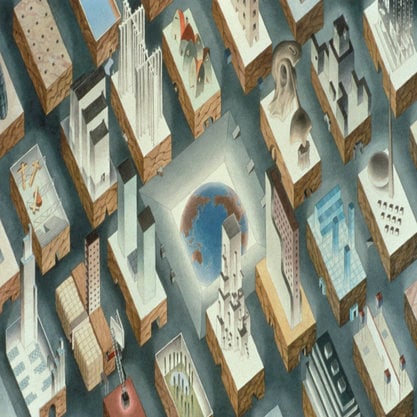Article
Scott, Michael (1905–1989) By O’Brien, Sorcha
Article
Michael Scott was the foremost proponent of modern architecture in Ireland during the mid-20th century. He specialized in public commissions, particularly hospitals and transport hubs, as well as private houses. His rural hospital designs in the late 1920s and 1930s were influenced by the work of the Finnish architect Alvar Aalto and the Dutch architect J. J. P. Oud, and emphasized linear horizontal masses, often finished with decorative limestone cladding. He was responsible for promoting the International Style both to Irish architects and the Irish government in the 1930s, and designed the award-winning Irish Pavilion at the 1939 New York World’s Fair. His later work was characterized by the sculptural use of white concrete forms (as in his own home Geragh), and the integration of artwork, bringing color and texture into his buildings. He is best known for the Corbusian design of the Dublin central bus depot Busáras, which used asymmetric organic shapes and incorporated colored mosaics on the exterior. He influenced several generations of Irish architects through his practice, and was awarded the RIBA Gold Medal for the Promotion of Architecture on his retirement in 1975.


.jpg)